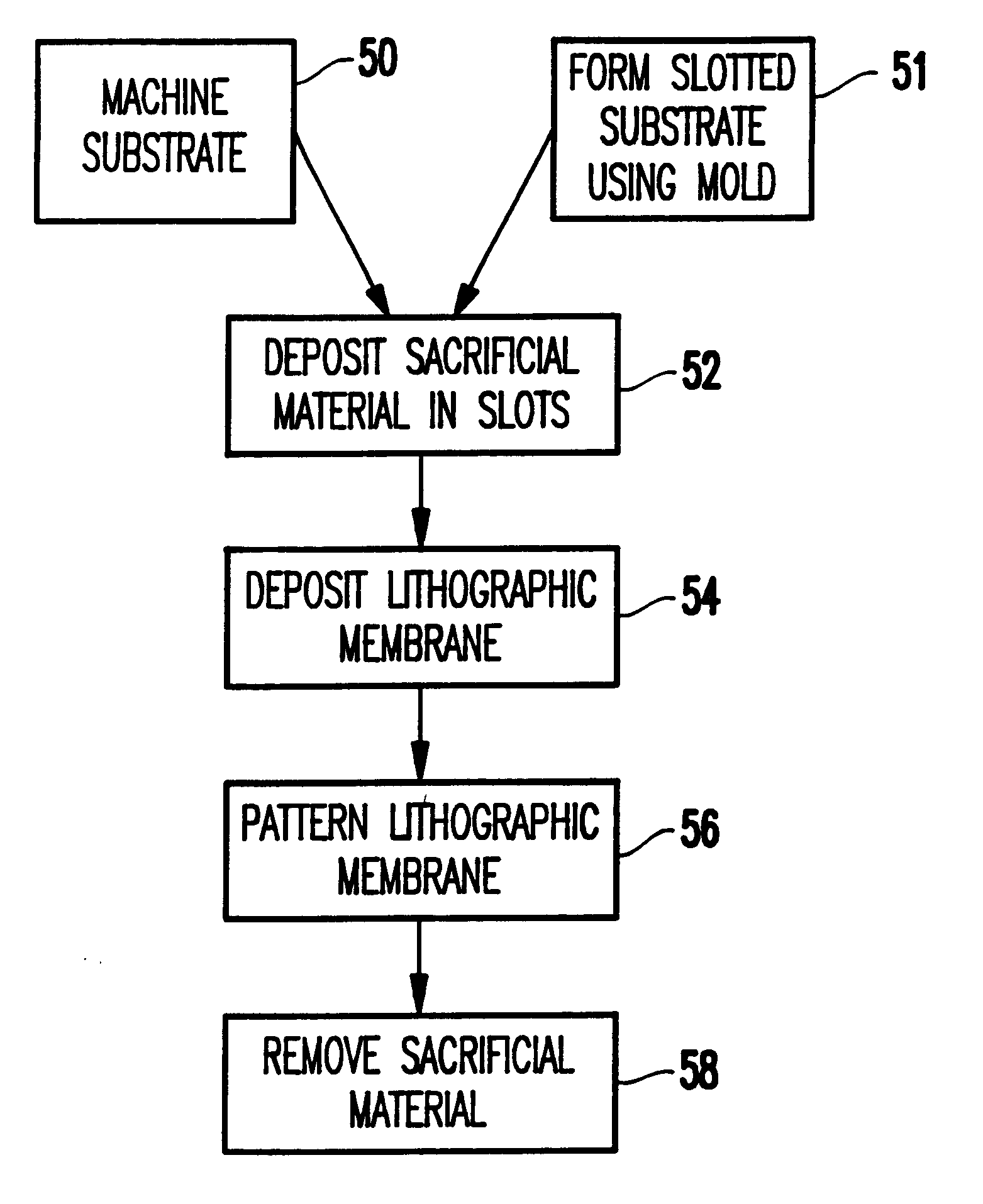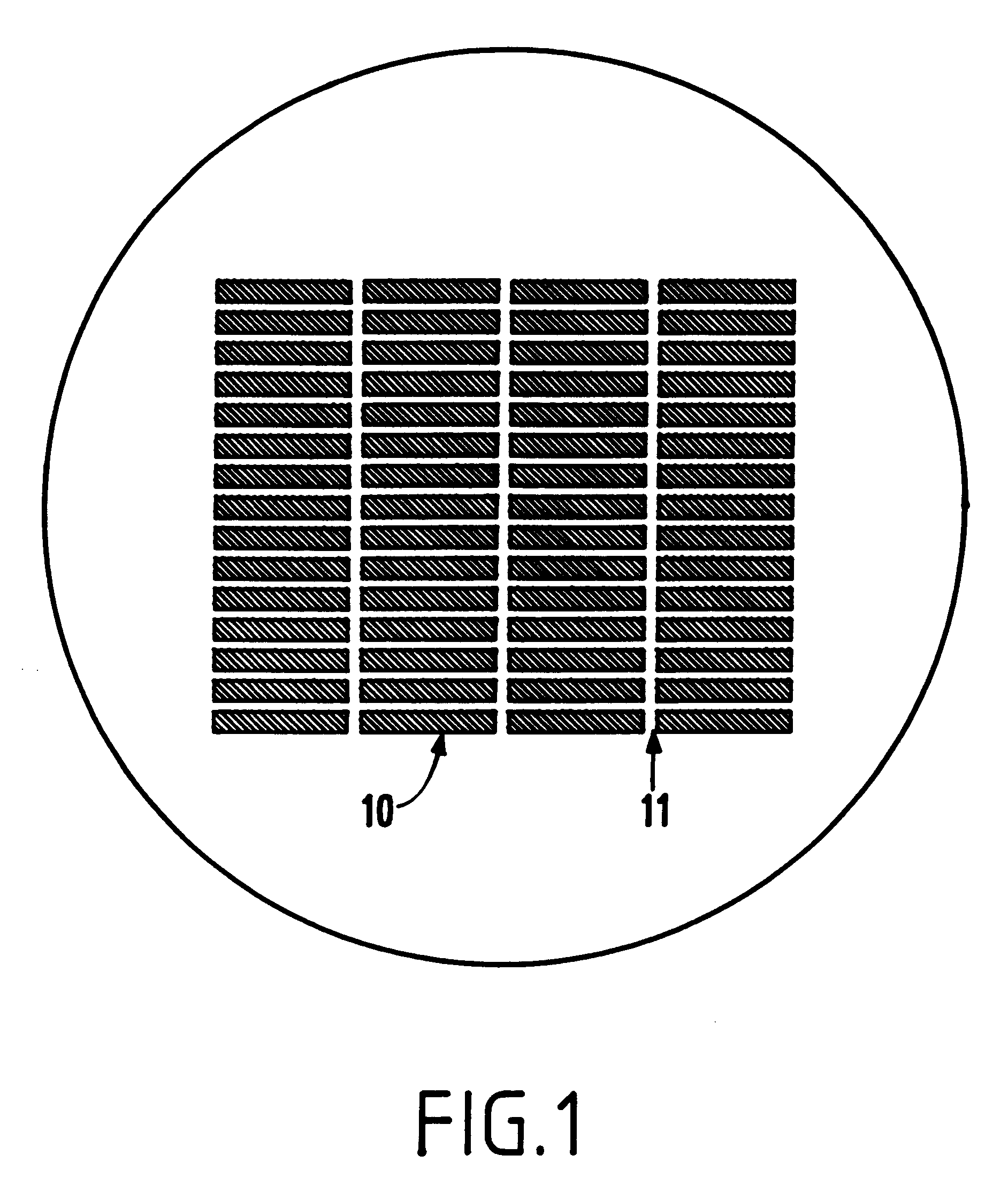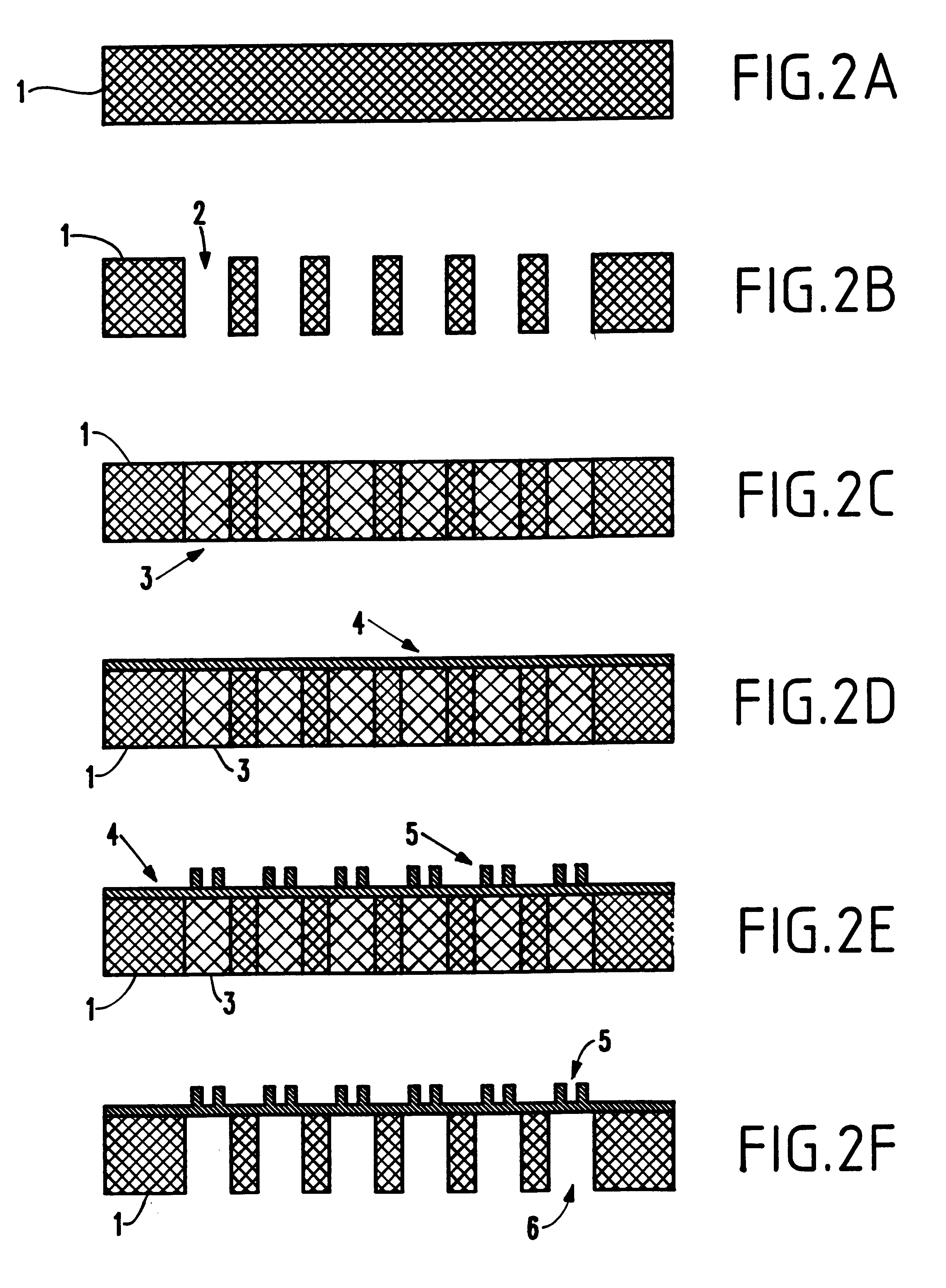Method of defining and forming membrane regions in a substrate for stencil or membrane marks
a technology of membrane region and substrate, applied in the field of substrate formation, can solve the problems of single wafer process, single wafer process, and inability to produce vertical profiles in only one direction, and achieve the effect of reducing the cost of dedicated rie system, and reducing the cost of rie system
- Summary
- Abstract
- Description
- Claims
- Application Information
AI Technical Summary
Problems solved by technology
Method used
Image
Examples
Embodiment Construction
FIGS. 2A-2F illustrate a first embodiment of the invention that begins with a substrate 1 of the strut material 11 (silicon, SiC, diamond or diamond-like-carbon (DLC), polymer, or other), as shown in FIG. 2A. The substrate 1 is mechanically machined to create slots 2 through the substrate 1, as shown in FIG. 2B. Mechanical machining is distinguished from chemical or reactive ion etching in that mechanical machining involves application of a cutting tool against the substrate 1. The slots 2 have the dimensions of desired opening for the membrane subfields 10.
The slots 2 are then filled with a sacrificial material 3, as shown in FIG. 2C. The sacrificial material 3 should have properties of reasonable mechanical, chemical, and thermal robustness be easily removed after mask processing is completed, and have the ability to completely fill the slots. Alternately, the sacrificial material to 3 does not need to completely fill the slots 2, so long as the sacrificial material 3 forms a cont...
PUM
| Property | Measurement | Unit |
|---|---|---|
| dimensions | aaaaa | aaaaa |
| thick | aaaaa | aaaaa |
| area | aaaaa | aaaaa |
Abstract
Description
Claims
Application Information
 Login to View More
Login to View More - R&D
- Intellectual Property
- Life Sciences
- Materials
- Tech Scout
- Unparalleled Data Quality
- Higher Quality Content
- 60% Fewer Hallucinations
Browse by: Latest US Patents, China's latest patents, Technical Efficacy Thesaurus, Application Domain, Technology Topic, Popular Technical Reports.
© 2025 PatSnap. All rights reserved.Legal|Privacy policy|Modern Slavery Act Transparency Statement|Sitemap|About US| Contact US: help@patsnap.com



